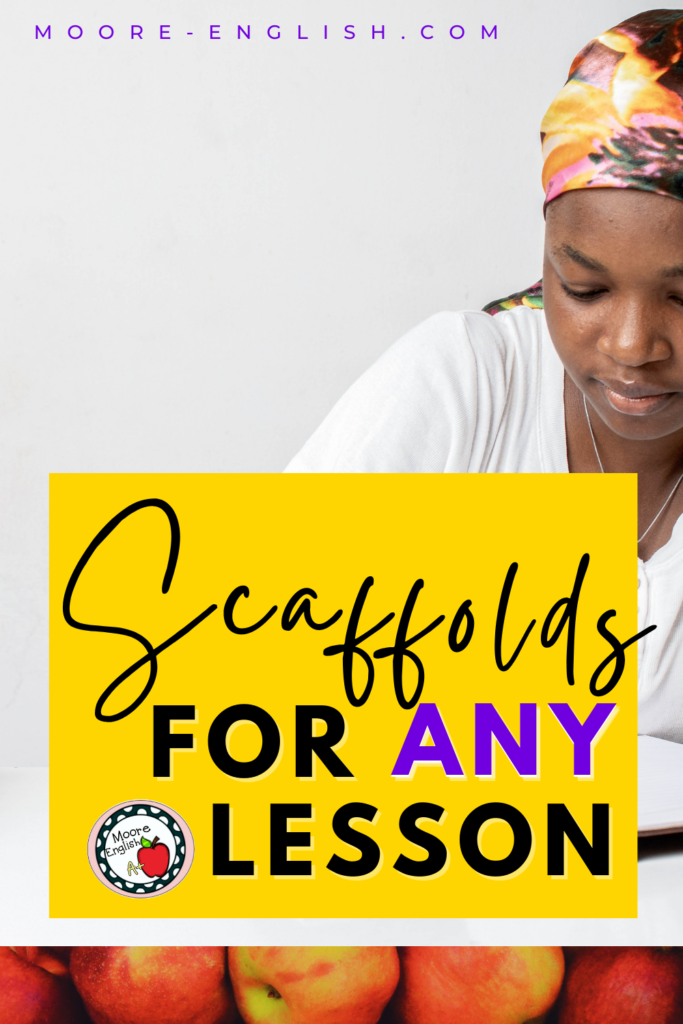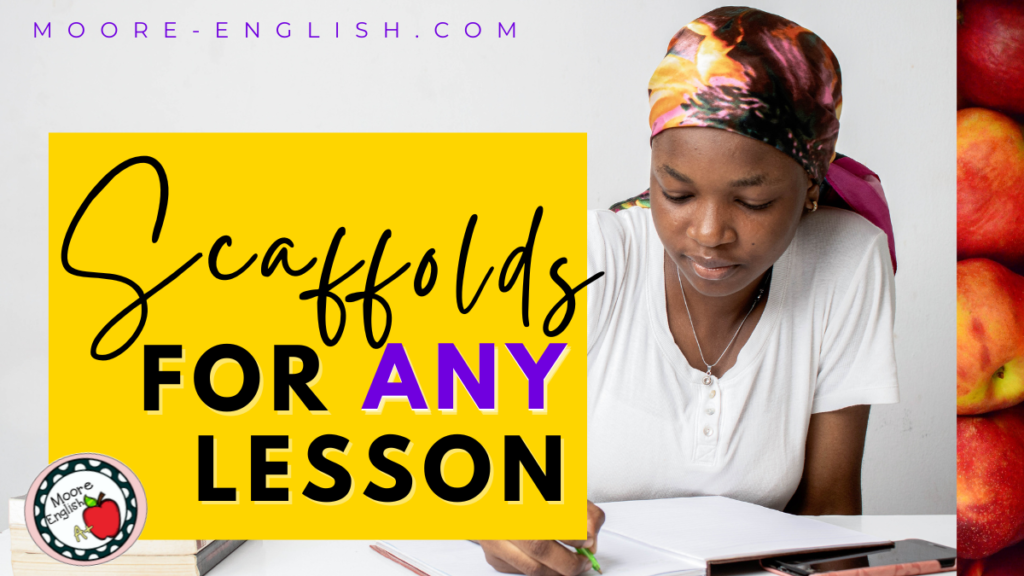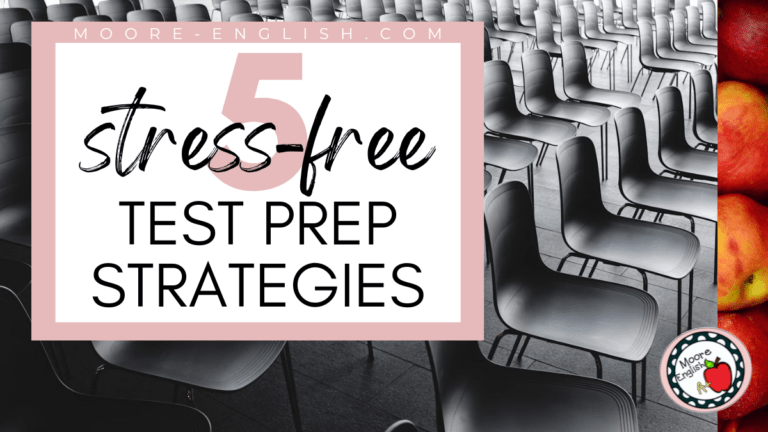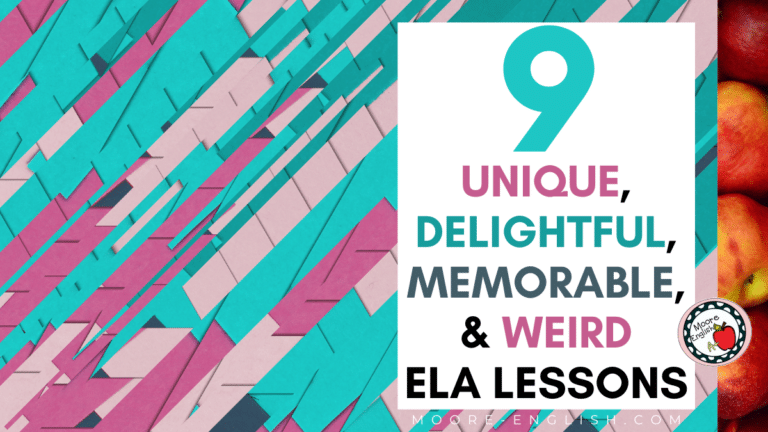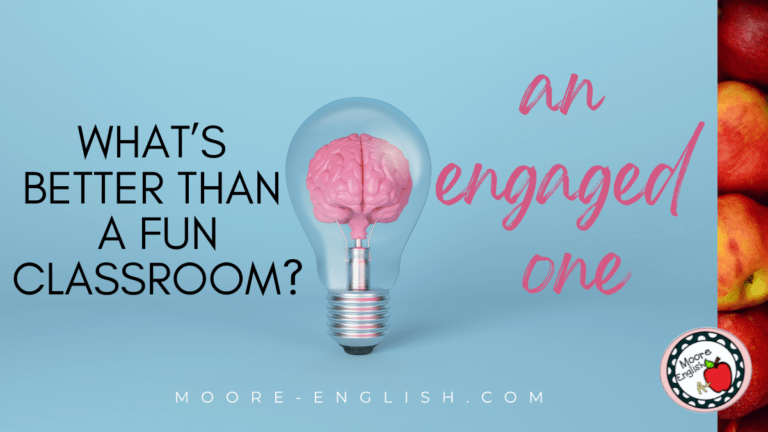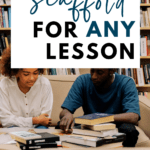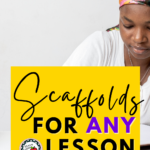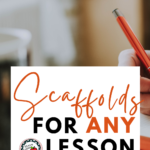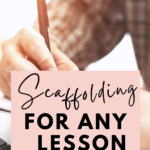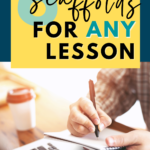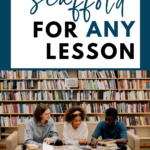When I think about scaffolding a lesson, I think about yoga blocks and resistance bands. While I enjoy exercising, I am not very flexible, and my arms are short. For this reason, I need assistance from yoga blocks and resistance bands to help me hold different poses and stretches.
When I first started exercising, I didn’t understand that yoga blocks and resistance bands are tools. They are not shameful or embarrassing. Instead, they are how I make certain workouts accessible. I modify them to fit my needs.
The same is true in the classroom. Teachers have to provide students with “yoga blocks” to help them achieve classroom goals. Sometimes these blocks are modifications (lowering the reading level) based on a student’s Individual Education Plan or accommodations (providing a transcript) based on a 504. However, most of our learners do not qualify for these IEPs and 504s but still require “yoga blocks” to help them achieve.
That’s where scaffolding comes in! To help you reach all learners, I wanted to share 6 scaffolds teachers can use with ANY lesson.
This post this post may contain affiliate links. Please read the Terms of Use.
Scaffolding Basics
Oftentimes, teachers are providing students with scaffolding without really thinking about it. At a certain point, you’ve been doing this for so long that you forget to recognize all the small steps that contribute to a students’ growth. Here are three scaffolds most teachers use everyday without even thinking about it:
- First, modeling is a type of scaffolding. When teachers walk students through a process, they are providing a kind of scaffolding.
- Similarly, strategies like I DO-WE DO-YOU DO are scaffolding. Gradual release strategies like this one are a personal favorite. There’s a reason these strategies are tried and true. Sometimes we might be tempted to combine the first two steps, but the more time teachers can spend modeling thinking aloud, the more successful students will be.
- Finally, formative assessment is a kind of scaffolding. When teachers provide students with opportunities to try, struggle, receive feedback, and try again, they are scaffolding the learning experience. Especially with high school students, teachers can explain and frame formative assessment in this lens, which helps students buy into the process of practicing.
Scaffolding Thinking
Sometimes students just need a little nudge to get them started. To help students begin thinking independently, teachers focus on helping students understand how to think critically. These kinds of scaffolding strategies are all part of metacognitive teaching.
First, sentence or thought stems are a perfect way to help students get started with writing or thinking. Stems can be controversial because some feel teachers are directing student thinking too much, but stems are a perfect way to help students shape their thoughts. Stems are a good way to avoid one-word answers and shrugs.
Second, evaluating exemplars is a good way to help students thinking critically. Especially when students are preparing to write, I like to show them exemplar texts at various levels. Student read the texts, apply the rubric, and discuss the strengths and needs of each piece. This helps students get into the habit of thinking like a writer and applying a critical eye to their own work.
Visual Scaffolds
In my experience, visualizing is a key part of helping students organize their thinking. Oftentimes, if students can “see” how an idea works, they are more likely to build their own connections and take ownership of their learning. These are my favorite visualizing strategies:
- First, brainstorming is such a good way to scaffold student writing. Brainstorming can be very formal like an organizer or can be less structured like a book map or audio recording. To help students find a brainstorming method that works, check out this brainstorming menu.
- Second, graphic organizers are always a good idea! Graphic organizers are wonderful scaffolds because they help students see the relationships between ideas. Check out my favorite theme graphic organizers!
- Finally, checklists are a good organizational scaffold. Like anyone, students can become overwhelmed. A checklist is a good way to help students manage their thinking. To keep everyone on the same page, consider putting the checklist on the board. Check out my favorite Rough Draft Writing Checklist.
What other strategies do you use for scaffolding student thinking and learning?

